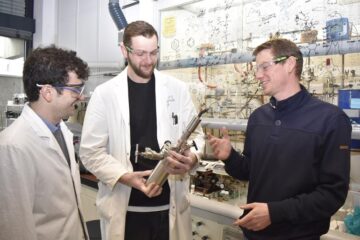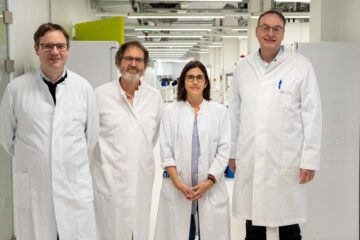Texas A&M Physics Professor Who Invented ’Quantum Afterburner’ Revs Up Perfect Engine

Marlan Scully, the Texas A&M University professor who applied quantum physics to the automotive engine and came up with a design that emits laser beams instead of exhaust, has been tinkering under the hood again. This time, he’s sized up the perfect engine — and improved it.
Scully, known as the “Quantum Cowboy” for his innovations in quantum physics and his Franklin Society prize-winning research into beef cattle production, has invented a theoretical design more efficient than the Carnot engine, which had stood for nearly two centuries as the standard for efficiency — an engine so ideal it exists only in theory.
In an article published this month in Science, Scully reveals a design that extends it. Scully’s design employs lasers, mirrors and a concept known as “quantum coherence” to drive a piston with less wasted energy than in the Carnot model.
In Scully’s engine, a quantum heat bath supplies the power: beams of hot atoms produce radiation whose pressure drives a piston. Scully likens the atoms to coal and the radiation to steam that drove early railroad engines.
Scully, a member of the National Academy of Sciences who holds joint appointments in physics and electrical engineering, is world-renowned for his work. But even though he and his collaborators have improved the engine that had been considered perfect, Scully makes clear that they have not rewritten the laws of physics — the second law of thermodynamics is not violated, he says, and perpetual motion is still a dream.
The new engine model follows Scully’s recent invention of the “quantum afterburner,” designed to capture energy from a car’s exhaust, thus improving the efficiency of a classical four-stroke engine. The quantum afterburner uses a process that drains heat from the heat-engine gases and converts it into laser light.
###
Contact: Mark Minton, Communications Specialist, Texas A&M University College of Science 979-862-1237 mminton@science.tamu.edu; Marlan Scully 979-862-2333.
Media Contact
More Information:
http://www.tamu.edu/All latest news from the category: Physics and Astronomy
This area deals with the fundamental laws and building blocks of nature and how they interact, the properties and the behavior of matter, and research into space and time and their structures.
innovations-report provides in-depth reports and articles on subjects such as astrophysics, laser technologies, nuclear, quantum, particle and solid-state physics, nanotechnologies, planetary research and findings (Mars, Venus) and developments related to the Hubble Telescope.
Newest articles

Efficient, sustainable and cost-effective hybrid energy storage system for modern power grids
EU project HyFlow: Over three years of research, the consortium of the EU project HyFlow has successfully developed a highly efficient, sustainable, and cost-effective hybrid energy storage system (HESS) that…

Safer alternative for an explosive reaction
The chemical industry has been using a reaction with explosive chemicals for over 100 years – now Mülheim scientists have discovered a safer alternative. The Ritter Group of the Max…

How immune cells communicate to fight viruses
Chemokines are signalling proteins that orchestrate the interaction of immune cells against pathogens and tumours. To understand this complex network, various techniques have been developed to identify chemokine-producing cells. However,…





















